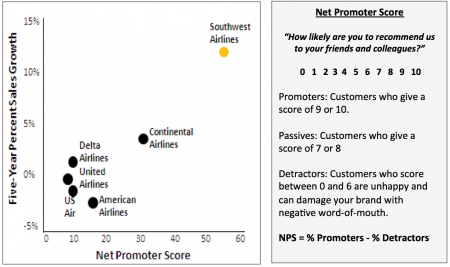A destination brand is shaped by the stories people tell each other. Consumers will share stories about their experiences. Do it right and they’ll do the marketing for you. Under deliver and they will become detractors. It’s the role of the DMO to lead the collection of stakeholders to market to the right people and deliver remarkable experiences.
Fortunately a visitor’s experience is one of the few things a DMO and it’s stakeholders have control over. And NPS, or Nett Promoter Score is the perfect way to measure and benchmark this. NPS measures customer satisfaction by answering one question – How likely is it that you would recommend [brand xyz] to a friend or colleague? On a zero to ten scale, people who score a 9 or 10 are promoters, they will recommend your destination. People who score a 7 or 8 are passive while people who score between 0 and 6 are detractors. They will tell others not to go. When you subtract the number of detractors from your promoters you end up with your Nett Promoter score.
There’s a lot of evidence that a high NPS is a strong indicator for corporate growth. Southwest is known for it’s friendly staff and business practices. It stands out from most other airlines in the US. Southwest built a customer centered culture and considers “a high NPS indicates a strong competitive advantage“. They have posted 39 years of consecutive profits and this blog posts quantifies the results of their customer service efforts.
I’ve been thinking about this for a while and have concluded that every DMO should measure NPS. Because not only is NPS a good indicator of future growth, it will also get staff and stakeholders to focus on the consumer and the customer experience.
Managing your destinations reputation is more important than ever. And it’s a collective responsibility. Use NPS to measure and benchmark it. Read The Ultimate Question to learn more about NPS.
Tags: customer service, NPS, service design, social media


